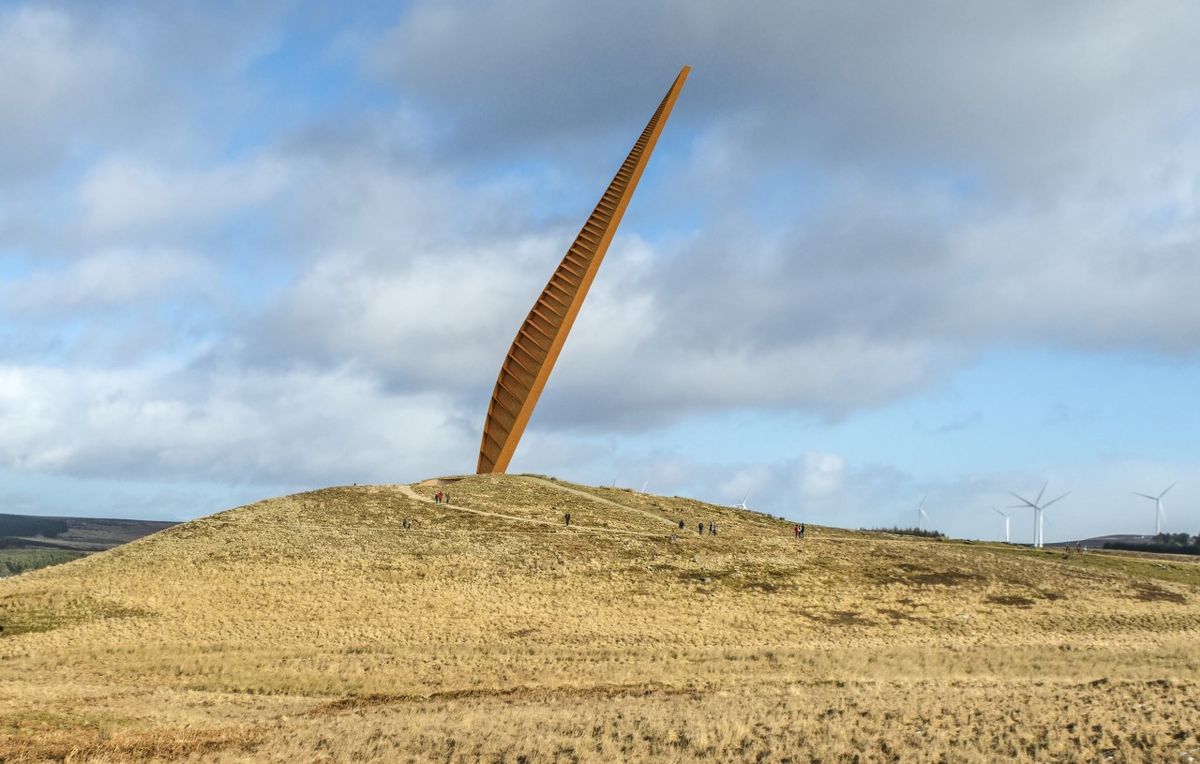A vast steel sculpture three times the size of Antony Gormley’s Angel of the North (1998) structure is due to be erected on the remote moors of Northumberland in north east England. The work by sculptor Simon Hitchens, which honours Queen Elizabeth II and is entitled Ascendant: the Elizabeth Landmark, has had planning approval granted by the UK government’s planning inspectorate.
The sculpture, commissioned by Terence Kearley (Viscount Devonport), will be located at Cold Law, a summit on Devonport’s Ray Demesne estate near Kirkwhelpington. The 55m-high work will be one of Britain’s largest sculptural works (Anish Kapoor’s ArcelorMittal Orbit in Stratford, east London, stands at 114.5 metres).
The piece will consist of a thin metal spike protruding from the earth. “The sculpture resembles the hill beneath; it is a perfect jigsaw fit to the topography of this unique hill,” Hitchens tells The Art Newspaper.
Hitchens also writes on his website: “Made from Corten weathering steel, this elevated slice of hillside has been inspired by the rugged and undulating landscape in which it sits. The elegant and robustly engineered aerodynamic form references the rich history of local iron ore and stone mining. Lateral fins which change in pitch and frequency as they rise up the sculpture accentuate the sense of perspective and movement, creating contrasting shadows along its 85m length.”
The original planning application for the sculpture was recommended for approval by the chief planning offer of Northumberland County Council in 2019 but the council eventually rejected the project. Kearley appealed the decision and the application went to a public inquiry. The viscount has now been given the green light after the government’s Planning Inspectorate—which is funded by the Department for Levelling Up, Housing and Communities—ruled in his favour.
Kearley told the Daily Telegraph: “It is our ambition to create a sculpture that is not only celebratory of Queen Elizabeth II and the Commonwealth, but which is also a magnificent piece of artwork that acts as a beacon for visitors and tourists to the region.”
But a local campaign group known as Keep the Wannies Wild has opposed the public art piece, saying on its Facebook page that its members “believe that Cold Law is not a suitable location for such an invasive and industrial piece of art.” In a statement posted yesterday the group adds that “the permission [inspectorate approval] carries a large number of conditions... the prohibition of lighting (except for an infra-red beacon visible only to pilots) and the prohibition of amplified music”.
Richard Morrison, a columnist with the Times, wrote earlier this year: “No public money is involved. Devonport [Kearley] has paid all the commissioning and development fees so far, and says that he has private backers ready to fund the £3m project.” Hitchens adds that the work has not been fully costed yet.


